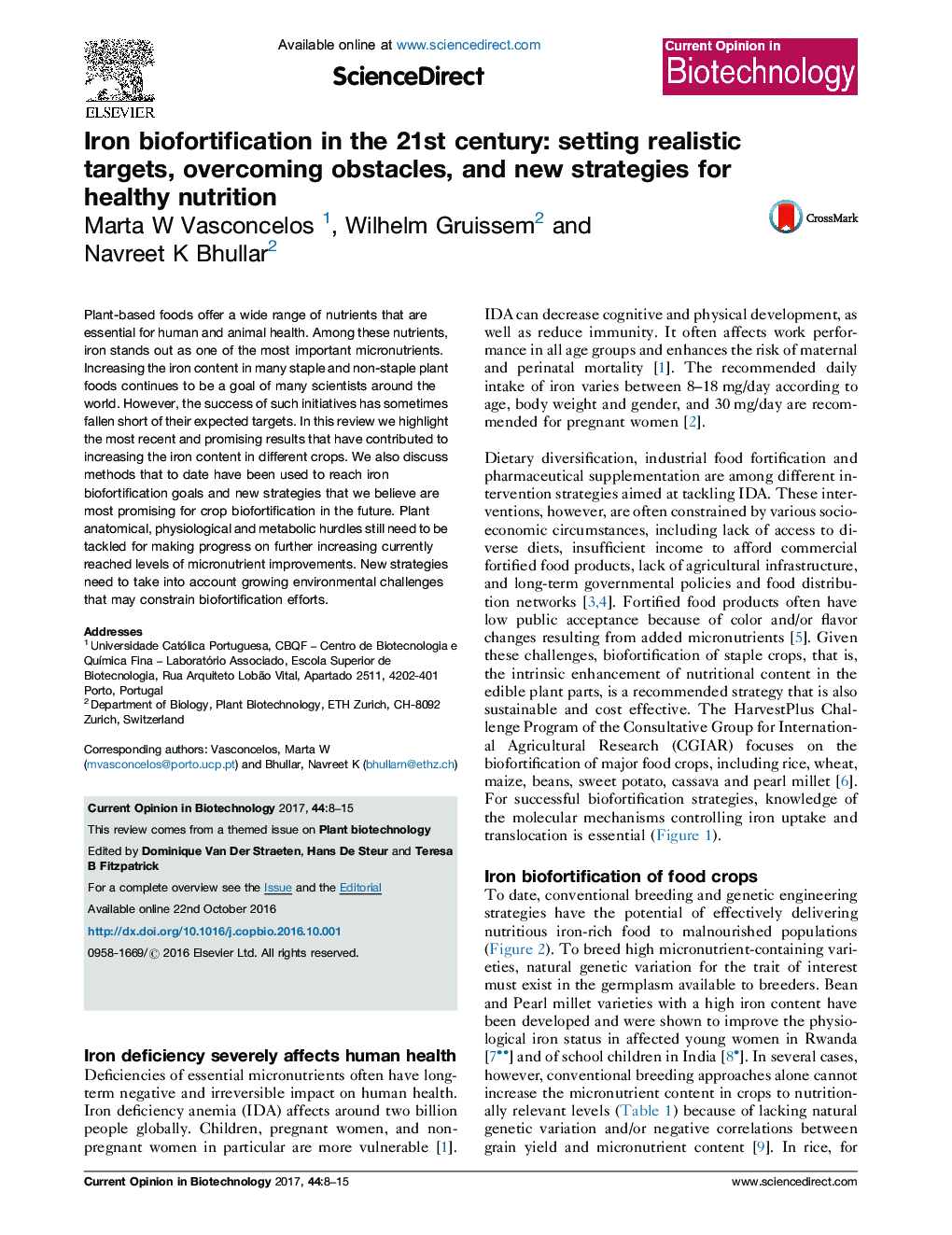| Article ID | Journal | Published Year | Pages | File Type |
|---|---|---|---|---|
| 6451565 | Current Opinion in Biotechnology | 2017 | 8 Pages |
â¢Iron deficiency has a long-term negative and irreversible impact on human health.â¢Socio-economic circumstances constrain conventional intervention strategies.â¢Biofortification is recommended because of its sustainability and cost effectiveness.â¢Breeding and genetic engineering approaches to iron biofortification are presented.â¢Future aspects and potential of new gene-editing strategies are discussed.
Plant-based foods offer a wide range of nutrients that are essential for human and animal health. Among these nutrients, iron stands out as one of the most important micronutrients. Increasing the iron content in many staple and non-staple plant foods continues to be a goal of many scientists around the world. However, the success of such initiatives has sometimes fallen short of their expected targets. In this review we highlight the most recent and promising results that have contributed to increasing the iron content in different crops. We also discuss methods that to date have been used to reach iron biofortification goals and new strategies that we believe are most promising for crop biofortification in the future. Plant anatomical, physiological and metabolic hurdles still need to be tackled for making progress on further increasing currently reached levels of micronutrient improvements. New strategies need to take into account growing environmental challenges that may constrain biofortification efforts.
Graphical abstractDownload high-res image (173KB)Download full-size image
